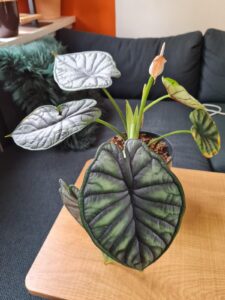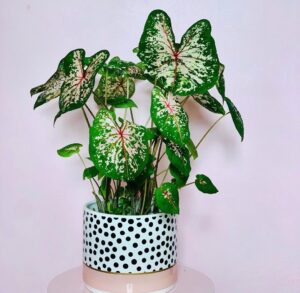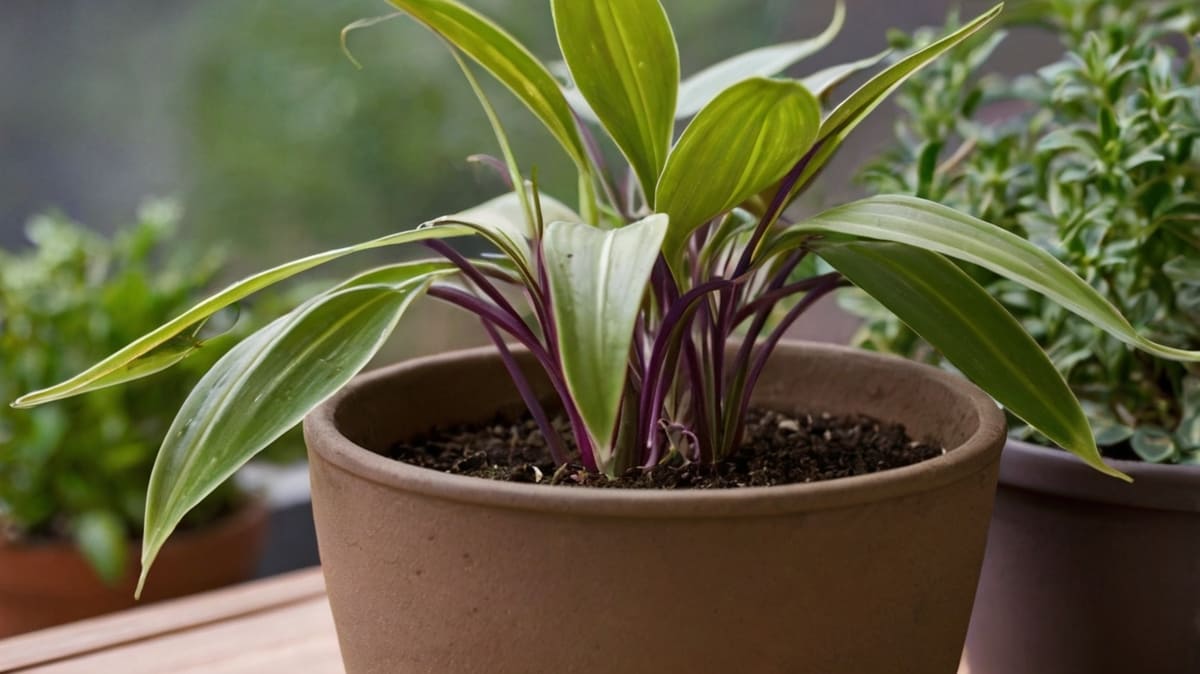
Tradescantia plants, often referred to as “Wandering Jews,” can be quite finicky despite their reputation for resilience. And this is what tradescantias do. They like to crawl.
If your Tradescantia is looking stretched out, sparse, or has damaged leaves, it’s likely a sign that it needs some extra care. Don’t worry, though—they’re pretty hard to kill! Here’s a comprehensive guide to get your Tradescantia back to its lush, vibrant self.
In this article
Diagnosing the Problem
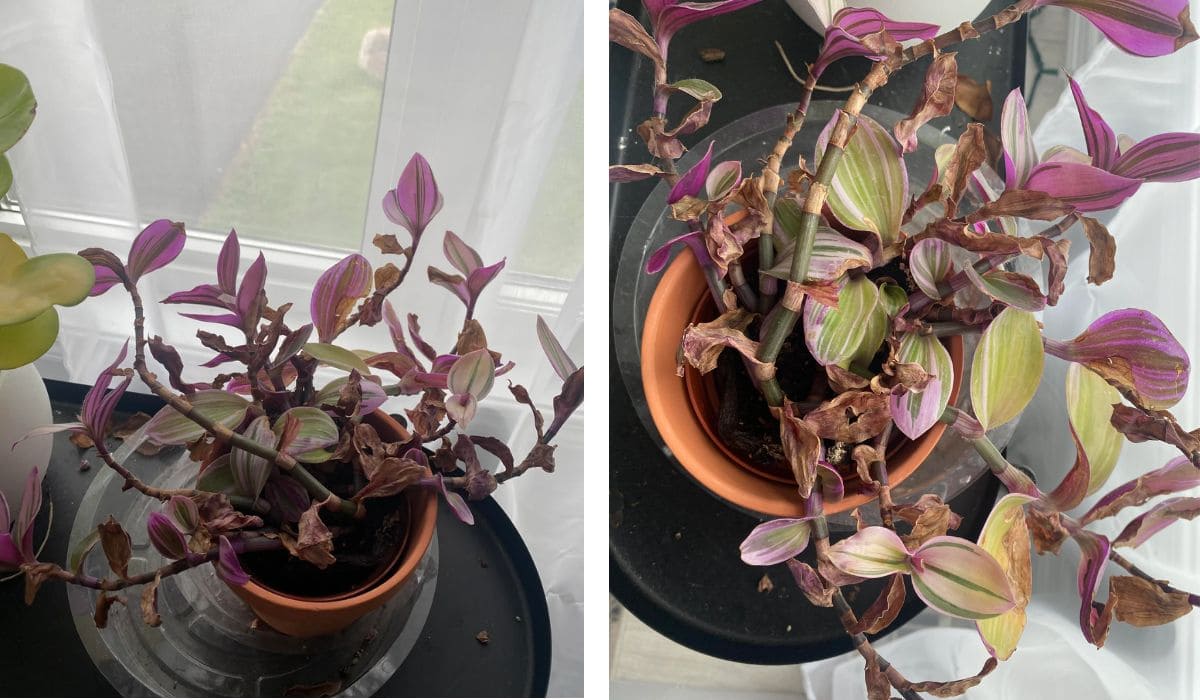
Stretchy, Leggy Growth
Leggy, stretched-out growth typically indicates your Tradescantia isn’t receiving enough light. When deprived of adequate sunlight, these plants stretch out in search of a light source. A grow light can be an excellent investment to keep them compact and prevent legginess.
Additionally, sometimes it just wants to get leggy, and if you don’t want that, you can prune it back and just stick the cuttings (with a node and a leaf) back in the soil. It roots super easily.
Damaged Leaves
Damaged leaves can result from under or over-fertilizing, water damage, or even the plant’s dislike of having wet leaves. To avoid this, ensure you’re not overwatering and that the leaves remain dry during watering.
Steps to Revive Your Tradescantia
Pruning
What I do with mine when they start dying back like this is to chop them, removing all but the last few leaves of the cuttings, and then coiling the vines around pots of dampened soil, securing the bare vines with Bobby pins. It’ll look janky at first, but the nodes will each root and send out new vine shoots. You then end up with a very bushy plant. I would also recommend you increase the pot size.
Propagation
Take the tops you’ve pruned, leaving them about 2-3 inches long. Remove the bottom leaves, keeping just one or two of the newest leaves at the top. These cuttings can then be planted in new pots with consistently moist soil.
Alternatively, you can place the cuttings in water; within 2-3 weeks, they will develop roots and can be transferred to soil.
Re-potting and Soil Care
Consider repotting your Tradescantia with fresh soil to rejuvenate its growth. Ensure the new pot has adequate drainage and place it in a location with plenty of sunlight or under a grow light.
Lighting
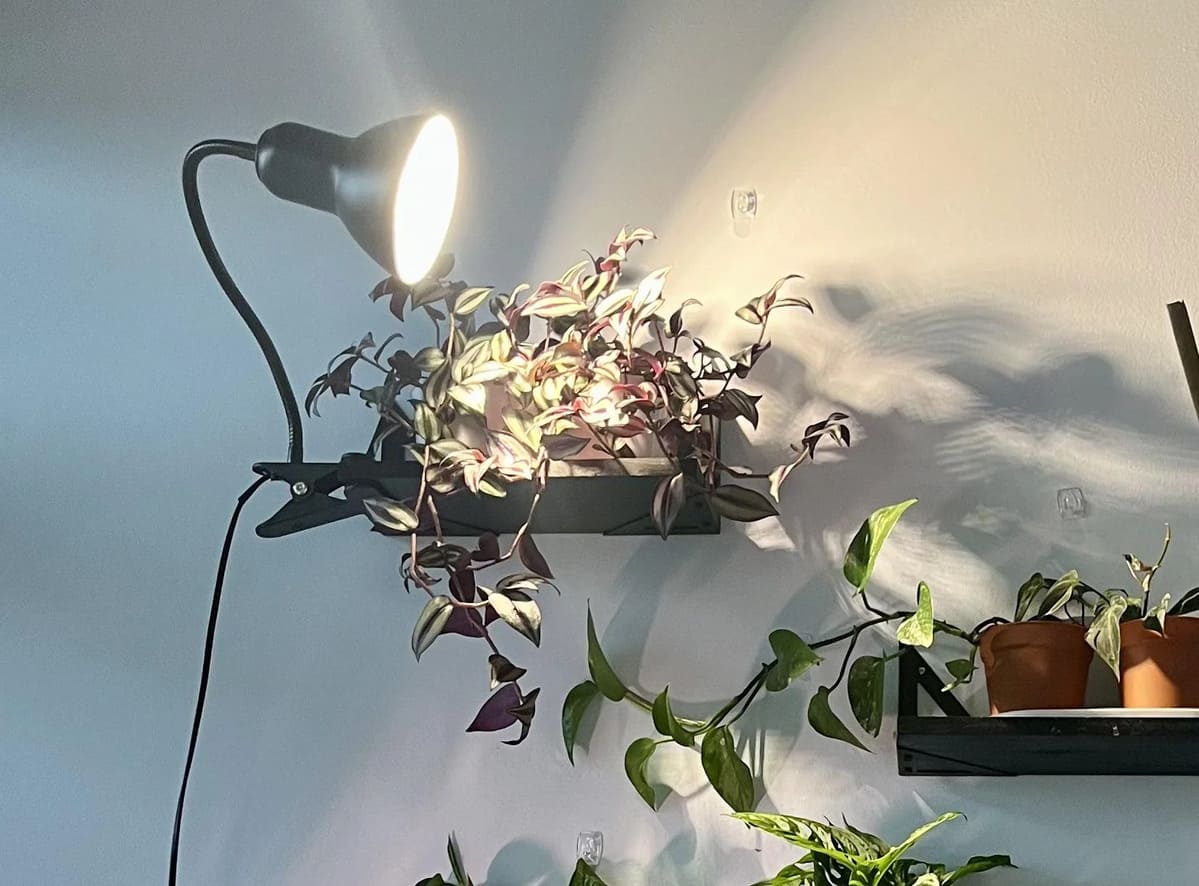
Basically, they can handle a LOT of sun, and will get leggy like this really easily if they don’t get it. Consider getting a small grow light to provide your Tradescantia with the bright, direct light it craves. This will prevent future stretching.
Continuous Care
Tradescantias tend to grow fast, so regular pruning and propagation can help maintain a bushy appearance. Coiling vines around pots of dampened soil and securing them can also promote new growth from the nodes.
Fixing the Issues
Here’s what I would recommend to get your Tradescantia back on track:
- Pruning: Cut all the stems back to the soil. This may seem drastic, but it will force new, fuller growth to emerge in just a few weeks.
- Propagation: Take the cuttings you just trimmed off and propagate them. Remove the lower leaves, leaving just 1-2 at the top. Plant the cuttings in moist soil in a new pot. They’ll root quickly and you’ll end up with more plants.
- Lighting: Consider getting a small grow light to provide your Tradescantia with the bright, direct light it craves. This will prevent future stretching.
- Watering: Be sure to water your Tradescantia consistently, keeping the soil moist but not waterlogged. Avoid getting water on the leaves.
- Repotting: If the plant is rootbound, consider repotting it in a slightly larger container with fresh, well-draining potting mix.
Bonus tip
Tradescantia also grow incredibly well in water. You can simply stick the cuttings in a jar of water and they’ll root in 2-3 weeks. Once rooted, you can transplant them into soil.
With a little TLC, your Tradescantia will bounce back and reward you with lush, vibrant growth. Don’t be afraid to get a bit aggressive with pruning – it’s the best way to encourage a fuller, healthier plant.
Happy gardening!
YOU MAY ALSO LIKE: My Top 5 Beautiful Houseplants


